
58 minute read
Grants article - Prue Saxby
Self-Care in the Country
By Chelle Fisher
Advertisement
BIO
Chelle is a Life Alignment Coach, Holistic Counsellor, Reiki Master, Accredited PuP Therapist and Intuitive Guide. With over a decade of experience in the energy healing field, delving into the mind, body and soul connection, using crystals and essential oils, life alignment coaching and expressive writing, Chelle has the unique ability to see the light in others and assist them to heal past wounds and trauma, align with their untapped potential and become their best. “As a wife, mother and now grandmother, I have walked the path of conditioning, self-doubt and selfsabotage and understand the challenges and limitations this can manifest in your life. Through my own journey and growth, I have developed a holistically based and unique combination of healing and releasing techniques to guide you to recognise and reframe your thinking to overcome limiting behaviours and remove blockages that keep you stuck. My deepest passion is assisting all people to reconnect to their authentic power and realise their true worth and deep inner strengths, encouraging them to live a life of calm, courage, confidence, peace and joy.”
LIFE ALIGNMENT COACHING REIKI ENERGY HEALING HOLISTIC COUNSELLING AND HEALING ACCESS BARS THERAPY PUP THERAPY (Parents under Pressure) INTUITIVE GUIDANCE Sessions available face to face or online via zoom. Contact details below: (w) www.chellefisher.com.au (e) chelle@chellefisher.com.au (m) 0408 942 781 How’s your self-care going? You know, the care of your body, mind and soul. We book our cars and equipment in for a service when it’s due, we book our accountant for a check up of our books and finances, we paint the house when it needs it, but what are you doing about looking after yourself? All too often, rural people neglect the thing that matters the most – their health and wellbeing. We put things off, delay, procrastinate or at times, do nothing at all. Your health is fundamental to your wellbeing and our lack of attention to this part of our lives often doesn’t get the attention it deserves until something goes wrong. As rural living people, there is often a lack of easy access to services in our area – we may need to travel long distances to access the help we need or want. Oftentimes, other things in our lives are a priority and the self-care aspects often get pushed way down the list of things that need to be done. But it doesn’t have to be that way. There are many ways we can practice self-care in our own homes or businesses.
Physical :
• Start your day with a few stretches – from your scalp to your toes – it will only take around 15 minutes to get a good stretch of the whole body. • A 15 minute walk to get the blood moving can do wonders – we can do this around the house if necessary or if the weather is inclement. • Eating a good breakfast gives us a great energy boost to begin our day. Haven’t got time to sit and eat? Make a smoothie from fresh or frozen fruit and some milk/yoghurt. • Don’t sleep well? Try not to watch anything on TV before bed that is confronting, violent or triggering to you – turn it off a bit before you retire and just let the day wash over you. If you can let it go, your sleep will be more restful. When you hit the hay, relax your body by slowly working your way from your head to your toes, relaxing each part in turn.
Mental :
• Leave that device alone until you have done the physical stuff suggested above – unless there is an emergency, most things can wait for half an hour. • If you must watch the TV news, limit your time spent – most news can be caught up on in about 15 minutes, after that it is mostly repeated. • If you can, take your cuppa outside and say good morning to the day. Breathe in the fresh air that we are fortunate enough to be surrounded by in our rural settings. • Need more assistance? There are many services – counselling, healing, exercising, meditating – that can be accessed online. Many services, including my own, offer sessions via zoom if you can’t make it in person. Also, ask about discounts – you just never know.
Soul :
• Do you have time to sit for 5 or 10 minutes each day and just breathe? Taking 3 – 5 deep breaths – slowly in and slowly out – can assist you to feel wonderful. This has two benefits: it fills you with oxygen which helps release feel good hormones and it makes you stop for a few minutes (this is also a great thing to do if you find yourself in a conflict situation – helps you to slow it all down and stop from blowing up!) • Take 15 minutes to sit with nature – when we stop and look at the amazing beauty that surrounds us, it fills our cup. Study a tree, check out a flower, watch the birds or the water if you are fortunate enough to have water close – Mother Earth is full of wonder and magnificence, if we only stop for a bit and really look.
Make your self-care a priority in your life – by looking after yourself first, you are more able to look after others. It is not a selfish thing to take care of your body, mind and soul – you are worth the effort. It doesn’t have to take hours – a few minutes a day can make a big difference.
Little Changes = Big Differences
The benefits of podcasting
By Neil Butler – Podversations / The Regional 250
Before I get started, let me set the picture for you. I am sitting in Car A of the eastbound Indian Pacific train, about five hours out of Perth, a very pleasant glass of Shiraz poured and laptop facing the window. It doesn’t get much more rural or remote than this. When you travel these parts of Australia, it really does underline the vast distances that many of your clients travel to provide their goods and services to their customers. Long distances in their cars with dodgy radio reception, crackling between the greatest hits of the 1970s and stock prices at the local saleyards. And even without the extremes of distance and crackly radio reception, how many of your clients – and potential clients – spend time on a treadmill or bike every morning, getting ready for the day ahead? Many business operators, entertainers, so-called and often self-proclaimed business gurus and thousands – probably millions – of other people have seen these scenarios as being an opportunity to get their message to the masses via podcasting. And it seems that during the COVID-19 lockdown, everyone became a podcaster, flooding the market with podcasts that ranged from quite outstanding to rather forgettable. Is podcasting something you’ve thought about for your business? If so, read on. If not, it might still be worth reading.
While many people still enjoy reading the written word (we are both doing that now, aren’t we), there has been an exponential growth in people choosing podcasts as their primary form of information gathering. And I think there are some good reasons for that. Firstly, which would you rather do – read what someone says OR hear them saying it themselves? How often do you misinterpret an email or a text message because you are reading the words without hearing the vocal inflections and emphases that a voice can provide? Secondly, if you receive as many emails as I do every day, you are probably not all that enthusiastic about receiving more reading material. Thirdly, when you are exercising or driving along in the car, reading is impossible. Listening to a podcast episode is very achievable and may make the exercise session or trip go more quickly. If you are travelling in regional or rural Australia, the crackly radio is as annoying as it is useless –podcasts eliminate that by allowing you to download the content before you leave and providing crystal clear audio. Finally, podcasting seems to be the “action attraction”. When I tell people I host podcasts, they usually want to know where they can listen to it and usually promise to. If I tell them I have a newsletter for them to read, that enthusiasm often dissipates. Don’t get me wrong – there will always be a need for written content, but don’t discount the value of audio content as part of your marketing strategy.
WHERE TO START
One of the great things about podcasting is the relatively low cost of entry. In reality, you can record your first episode on a mobile device or, if you are interviewing a guest, on a Zoom call, upload the audio to a podcast hosting platform and off you go. Obviously, the more you spend on equipment, typically, the better the quality of the podcast content, so bear that in mind. It became evident during the COVID-19 lockdown period, that many, many people decided they would try to record a podcast. I’d love to know the statistics on how many podcast series went beyond two episodes during that time, though. Many podcasts sound like a good idea at the time but then a combination of other priorities, poor responses from listeners, small numbers of downloads, etc result in many being aborted within the first couple of weeks. But podcasts are like any other product or service: • Things will start slowly with any uptake generally happening over a period of time. • If you want your podcast to stand out from the crowd, there needs to be a point of difference – why should I listen to your podcast instead of the thousands of others I could choose from? • If no one knows about your podcast, then no one will know about your podcast! You’d never launch a product or service without some sort of marketing strategy – a podcast is no different • You need a podcast strategy. I have spoken to many aspiring podcasters who, when asked what they were trying to achieve, have little or no idea beyond wanting to launch a podcast.
So let’s delve a little deeper.
DEVELOPING YOUR STRATEGY
I suggest you start with two really simple questions: • What are you trying to achieve? • Who is your likely audience? If you can’t answer those two questions, bail out now. Even if you need to stop and think about the questions, you might do well to choose another activity.
There are no right answers, by the way, but a couple of answers to the first question might be: • To promote my brand • To develop credibility as a thought leader within my industry sector For the second question, are you trying to attract new customers, provide information to existing customers, inform people in your immediate area or people across Australia, etc? The answers to these two really basic questions will inform the content and style that you employ in your podcast episodes and the way in which you will market or promote it.
As an example, I host a podcast series called The Regional 250 where I interview people who live in regional Australia, one per local government area (by the way, I am always keen to hear from potential guests at www.theregional250.com.au/ register). The answer to the first question is in two parts – (a) I want to promote regional Australia by highlighting up to 250 different local government areas across the country and (b) I want to provide a platform for people to tell their story about their life in regional Australia. The answer to the second question is also in two parts – (a) people who live in regional Australia who want to know more about other regions and (b) people who live in capital cities and their suburbs who are considering visiting or living in regional Australia. The other thing to consider is the structure of the podcast series. In my mind, each episode should be of a similar length and of a similar structure. For The Regional 250, each episode is between 25 and 30 minutes in duration and follows the same structure – the first half is a conversation about the town and/ or region, based on a consistent set of Fast Facts questions and the second half is all about the guest’s story. With these clear statements of strategic intent and structure, my direction is set and so far, The Regional 250 has been really well received. If you want to check out an episode or two, please visit www.r250.com.au BUT I’M NOT VERY TECHNICAL
You don’t have to be! Sure, you might need to be able to use one of the basic audio editing systems like Audacity or Adobe Audition to add a music theme or remove an indelicate comment, but once you have created the audio file, all you need to do is upload it to your preferred podcast hosting platform and they will, typically, do the rest for you (e.g. distribution to the podcast stores, etc). If you want to invest in some equipment, the first thing to buy would be a good microphone. The entry point is a USB microphone – this plugs straight into your computer and allows you to record directly onto your hard drive. This makes your editing easier but more importantly, provides better quality audio than your phone headset or computer microphone will allow. You can expect to pay $200 - $250 for a good USB microphone with several others at price points above and below. If you want to go further than that you can, but I would recommend two things: 1. Create a couple of episodes using your existing equipment to see how you go. You don’t want to spend a heap of money on equipment that ends up in the cupboard because you decide podcasting isn’t for you. 2. When you do go to purchase, chat to other podcasters and see what they use and then visit your local audio store or web site. If you haven’t done the research, you may well end up buying something unsuitable for your needs.
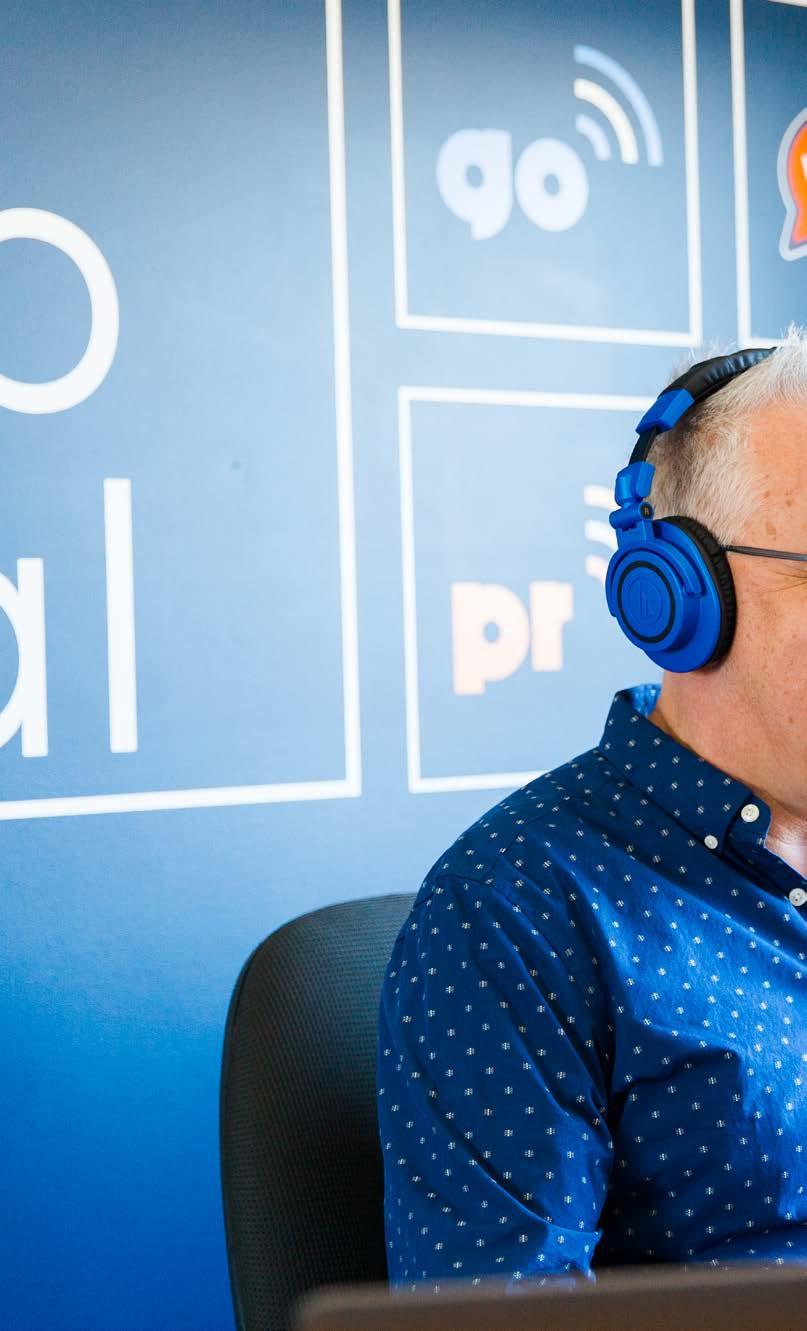
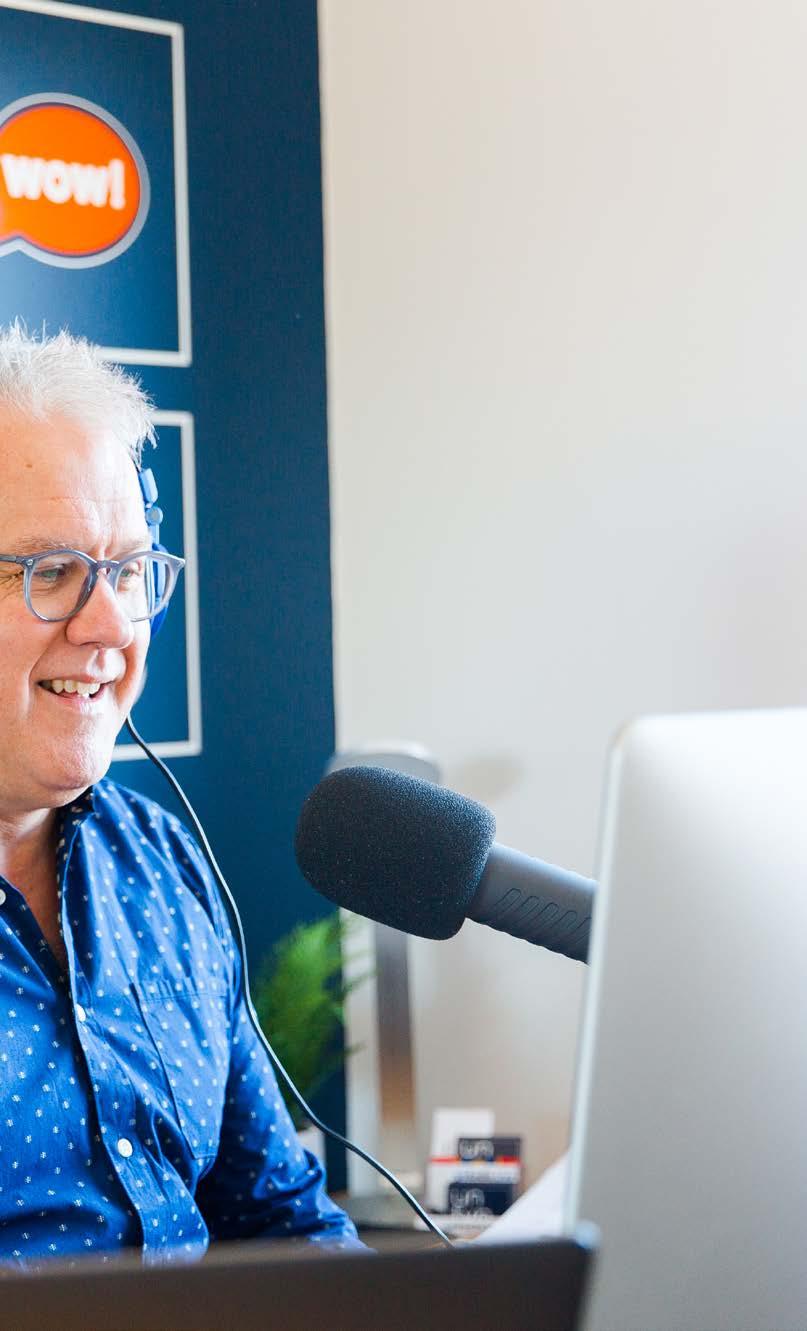
CHOOSING A HOSTING PLATFORM
Just like web hosting services, there are a plethora of podcast hosting platforms. Some offer a free service for a limited number of episodes, but you can typically expect to pay for a hosting service. How much you pay depends on how many episodes you want to make and distribute, whether you want them to manage the distribution to the online stores, whether you want a web page or the ability to embed episodes on your own website, etc. Again, my recommendation would be to chat to another podcaster and see which service they use. There is no right or wrong answer – just an answer that meets your requirements. While you are still finding your way, you might do well to stick with one of the free services. You can always choose a different provider once you have established yourself as a podcaster.
THAT’S A WHOLE LOAD OF GOBBLEDEDOOK – I JUST WANT TO CREATE A PODCAST
Creating your podcast is a little bit like creating your own website – you need at least a basic understanding of the technology and creation process. If you are completely bamboozled by what I have written about the steps involved, you have the option of outsourcing your podcast production. I have created a service via my Podversations brand where all you need to do is line up the guests and the topics and I do the rest – interview them, record the conversations, edit the audio and upload the content to a podcast hosting service. Doing this gives you the best of both worlds – your business gets all the advantages of having a podcast without the hassle of doing it yourself. Currently, I am hosting and producing podcasts (or “podversations” as I like to call them) about Regional Leadership, Irrigation, Wine and Community Storytelling. Each of these organisations were in a situation where they saw value in having a podcast for education and/or marketing purposes but realised that they didn’t have the skill set or inclination to do it themselves. If you would like to know more about our Podversations service or even just kick around your podcast ideas, please contact me via email at hello@podversations.au or by phone on (03) 5280 8044. As I said earlier, podcasting seems to be the action attraction for many businesses of all shapes and sizes. Maybe it’s right for yours too. There is no right or wrong answer – just an answer Author:
Neil Butler – Podversations / The Regional 250 Neil Butler has been broadcasting since 2007 and started his podcasting adventure in 2015. He is the founder of Podversations, a small business based in Geelong, Victoria. He has produced several podversation series including The Regional 250, amounting to more than 400 episodes in total. He also co-hosts The 2 Blokes Chatting Radio Show every Saturday morning on 94.7 The Pulse in Geelong.
The Importance of Entering Awards
By Amy Milford
Hi, my name is Amy Milford, and I am the Owner and Founder of Darwin Family Life, which I established 5 years ago. I started Darwin Family Life to create a better work life balance while raising my young family (and escaping working for a difficult boss at the time). I have four kids aged 11, twin boys 9 and my youngest is 6, and my fifth baby is my business! Darwin Family Life is a big online community (over 16,000 parents, across my various platforms) and a resource for Darwin parents or those considering to move here. I also realised there was a missing hub of information for families in Darwin, especially the transient Defence force up here. One aspect of my website is my directory, where I help advertise and promote small businesses that are family orientated to my audience of parents. I would love to expand my directory and feature more businesses that have products or services for babies, kids, mums or families as a whole on there. If you have a business that is family orientated with products or services online –I would love to hear from you! This year, I have completed some studies with the Women’s Business School and one of the units was on PR and the importance of entering awards. As a small regional business located in Darwin, Northern Territory, the impact of entering awards this year has certainly taken my business to the next level. One of the awards I entered was the AusMumprenuer award. These awards celebrate and acknowledge the outstanding achievements of Australian mums in small business. I entered the People’s Choice – Making a Difference in the Local Community category. This meant the people of Darwin and beyond needed to vote for me. It was super special to me to bring home the Bronze award for this category, as it reinforced that the community valued my business. They acknowledged that I make a difference in the community.

Amy Milford – Owner and founder Darwin Family life
Find Darwin Family Life: darwinfamilylife.com.au Follow us on Facebook: facebook.com/darwinfamilylife Follow us on Instagram: instagram.com/darwinfamilylife Get in touch: info@darwinfamilylife.com.au
Being the only NT Mum in business at this national award ceremony, I knew it was a great story for the media. From my PR study knowledge and support from those with experience, I put together my media release and contacted the various local media outlets, both radio and newspapers. Just like I anticipated, the media jumped on my story and there was a flurry of newspaper articles and radio interviews. Being a regional small business definitely played to my advantage here. Local media love local stories. If you are a small regional or rural business, I highly recommend you enter an award. Even being a finalist or nominee in an award can still elevate your business. You can utilise the logos and showcase your efforts on your website and other areas. It still gives you confidence, recognition and acknowledgement from a third party. Imagine if you were buying a new item, for example a kid’s toy. One toy had a gold star sticker “winner of best kids toy”, the other toy had no sticker, just plain packaging. You would subconsciously pick the gold star one and think it was superior. I realised that entering awards actually was giving my business and my efforts acknowledgement from a third party and it has given me further authority and more trust in the community. It was giving my business credit and acknowledgement for the years of hard work I have done. This year alone I have entered the AusMumprenuer Awards, The Australian Small Business Champions, The Australian Women’s Small Business Champions and Roar Success Awards. Enter as many as you can manage, that are relevant to you and your business. If you need any assistance with entering an award, there are several experts who specialise in putting the applications together on your behalf. I love connecting with others in the community, so feel free to connect and follow along on socials or Join Our Email Newsletter - Darwin Family Life 2022 has been my year to thrive and not just survive! Now it’s time to set some goals for 2023!
Is entering an award on your goal list for 2023? I think it should be.
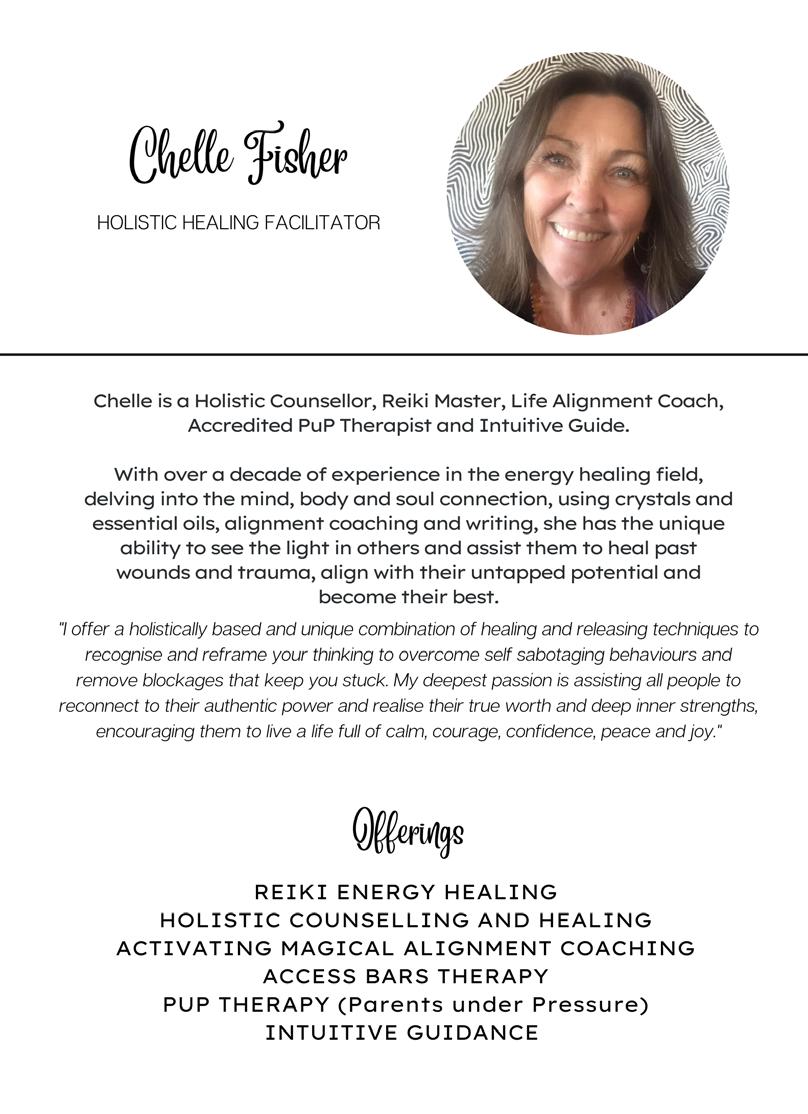
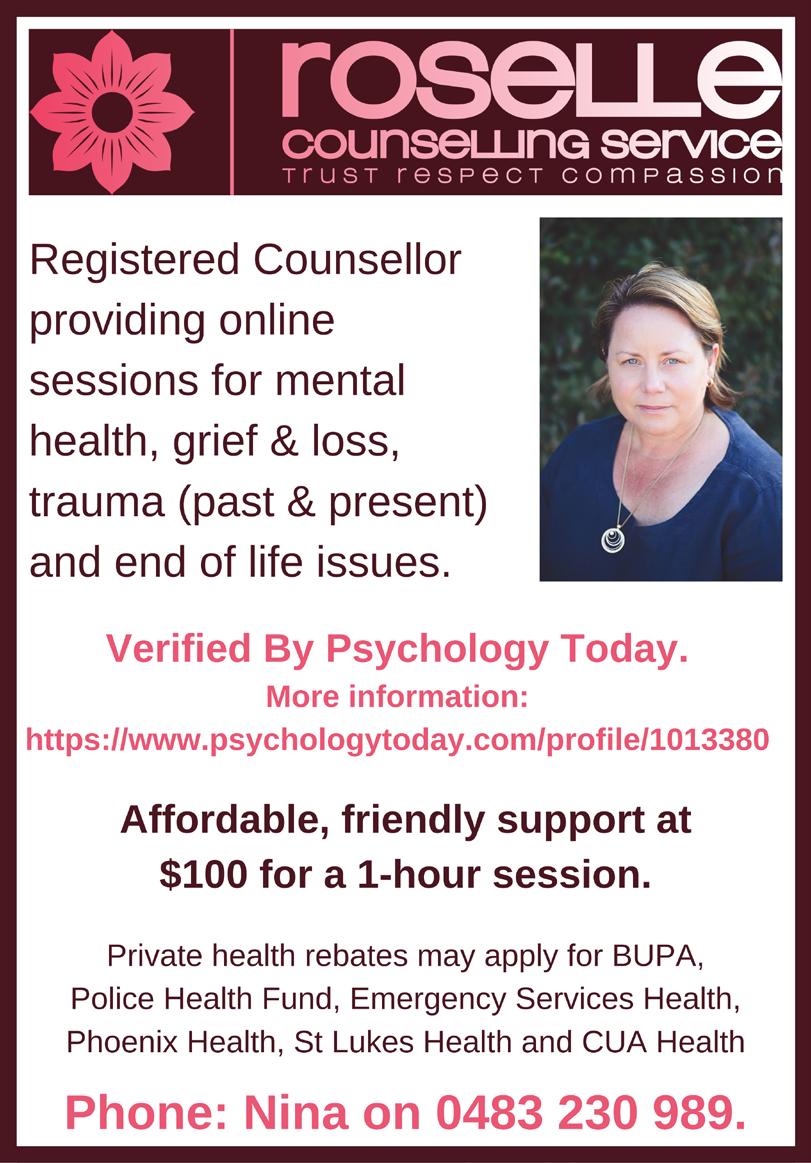
Hiring a copywriter –Tips to ensure the maximum results with minimum fuss
By Angela Pickett – Angela Pickett Copywriter
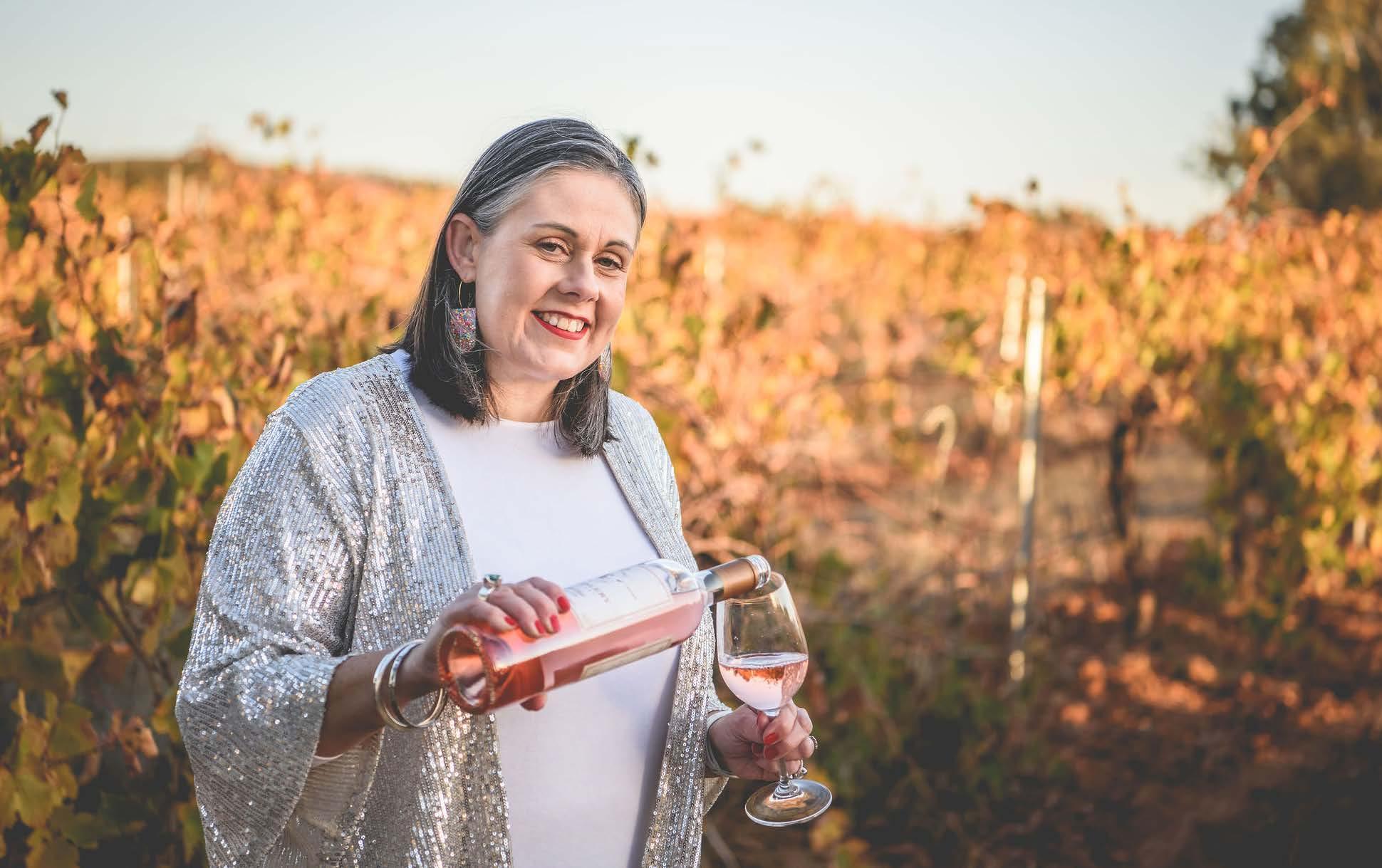
Hiring a copywriter to write copy or content is a significant investment of money and time. You want to get it right. If you’re outsourcing content for the first time, you might wonder what’s involved and what’s expected of you. To get the most out of your copywriting project, you need to do some work and share your ideas with your copywriter. We may be clever with words, but we’re not mind readers. Getting new website copy, blogs or marketing content doesn’t need to be complicated or stressful. I’ve compiled some suggestions for you to use during your next copywriting project.
1. Be clear on what you want written and why you want it written. Knowing what you want written is useful. But sometimes it’s even more important to understand why you need something written. Are you launching a new product or service, changing your niche or building an email list? If you can tell your copywriter what you’re trying to do, they can often suggest the best copy option. 2. Know how to explain what you do, why you do it and who you do it for. You need to explain what you do, why you do it and who you do it for. If you can’t, it’s going to be super hard for your copywriter to write copy that connects with your ideal customer. Don’t stress if you struggle to write about your business. Most copywriters are happy to sit and talk it through with you. Imagine you’re telling a friend about your business. 3. Share previous content and back ground documents. The more information you can share about your business, the better. This might include articles, interviews or podcasts, and will help your copywriter understand you, your business and your customers better. Even if things have changed in your business, it will still be useful background information. 4. Share customer testimonials, case studies and interview information. The words your customer uses to describe using your product or working with you are so valuable. If we describe the problem, you’re solving it in the words your potential customer is likely to use, and therefore it’s going to be easier to connect. Testimonials and reviews are great, but it’s even better if you connect your customer and your copywriter. Many copywriters insist on chatting to a customer before they start a project. It’s a great way to understand how customers view your business. 5. Allow the copy to guide your website design. This isn’t always possible, but if you can, hire a copywriter before you hire a web developer. Most copywriters can provide advice on the best options for website architecture. If your copywriter and designer can work in tandem, you’ll end up with a better result. There’s nothing worse than trying to shoehorn copy into an existing site. 6. Set a realistic timeframe. Good copy doesn’t happen overnight. You need to allow time to contribute and provide feedback on at least 2 rounds of revisions. If you need to consult with others, you’ll need longer. As copywriters, we know that sometimes things pop up that are beyond our control. But if you miss agreed deadlines, your copywriter mightn’t be available straight away. If you need the copy written by a certain date, tell your copywriter and stick to the deadline you set together. 7. Be open about what you can afford. You mightn’t know what your copywriting project will cost, but I’m sure you know what you can afford. Sharing your budget with your copywriter at the start will help them design a suitable scope of work. If you have a limited budget, your copywriter might break the project into stages or provide a payment plan. Like many other copywriters, I provide some indicative rates on my website, and you can also check out this rates guide from Australia’s largest copywriting membership. 8. Provide honest and timely feedback. Tell your copywriter what you think of the copy as early as possible. Most copywriters provide several rounds of revisions for free, but you need to make major changes early. Let your copywriter know if something isn’t right and be specific. You won’t hurt their feelings. 9. Provide one set of comments. Even if you’re a solo operator, you want others to look at the copy. It’s fine to show your mum, your partner or your dog, but remember, you’re paying an expert for a reason. If several people comment on the copy, give your copywriter a consolidated set of comments or revisions to save them sifting through duplicate comments. Also, there’s nothing worse than trying to adjudicate an in-house argument.
Most importantly Communicate and ask questions if there’s something that doesn’t make sense. Find a copywriter you like talking to and build rapport. My most successful projects have been those where my client and I have built a good relationship from the beginning. Like anything in business, a successful copywriting project that meets your goals takes time and effort. But if it increases sales, builds your profile and connects with new customers, it will certainly be worth it.
About Angela Pickett – Angela Pickett Copywriter
Angela Pickett is a Barossa based copywriter. She’s the creator of powerful words and chief cheerleader for female founders and family-owned businesses in rural and regional Australia. Angela writes website content, sales pages, email sequences and blogs. She’s an active member of the local community as secretary for the Barossa Community Foundation and is on the committee of her sons’ hockey club. When she’s not on the sidelines at sport or managing their home renovation, Angela enjoys reading, cooking, CrossFit and trying new wines.
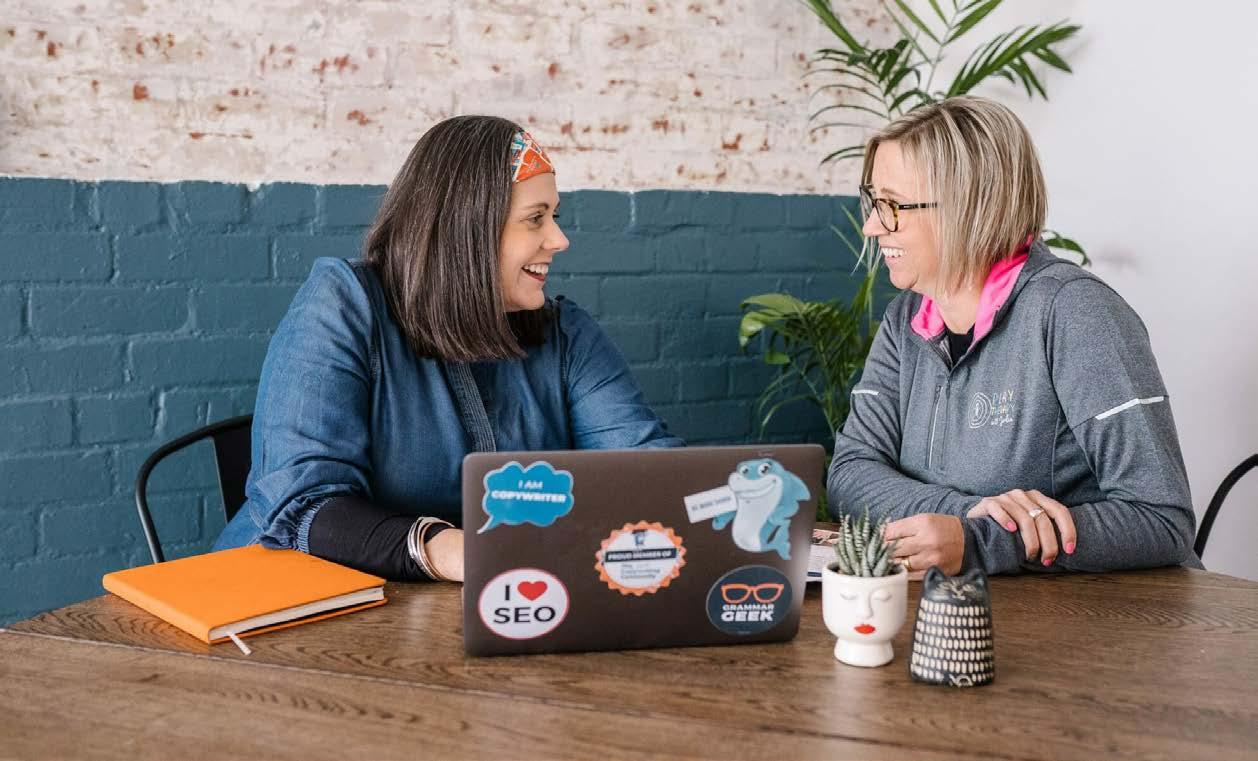

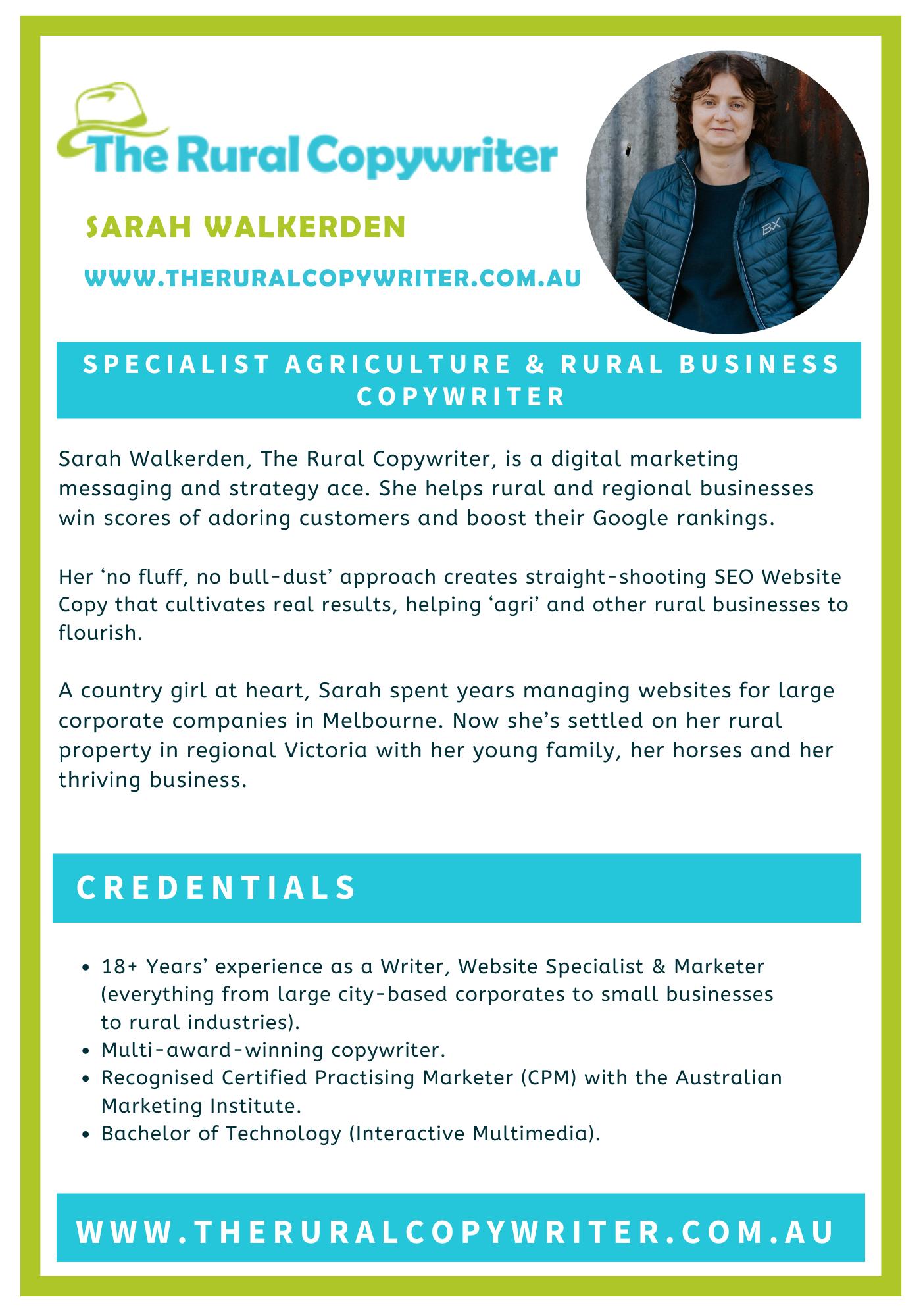
By Sarah Walkerden – The Rural Copywriter
As we all should know, writing effective website content or copy is often the leading aspect that determines whether or not your website will actually convert and bring you in the sales and enquiries you need. Or, if you don’t have the right copy, your website just won’t work. However, even if you engage an awesome writer to write your copy for you in the beginning – this work is never ‘set and forget’ for too long. There will be times when you will need to review, update or re-write that copy all over again. Which might seem frustrating, but continual review and updates really are important to ensure your website stays relevant and engaging to your customers. Why should I review and re-write my website copywriting?
The fact of the matter is, that your business will change and evolve over time. Your products might change. Your services and offerings might change. And nothing kills a great website – or a great business – more than out of date copy. It makes you and your business look that little bit silly, hey? But even more seriously, it can also lead to disgruntled customers or even legal ramifications if you promise something publicly that you can no longer deliver. Chances are, you’ll also need to keep updating and adjusting the keywords you target as part of your SEO strategy. Therefore, if your keywords change, so must your copy. And sometimes, you’ll need to start over from scratch to make sure you hit the right angles with both your keywords and your customers. To summarise, you should regularly update or re-write your website copy, to: • Accurately reflect who you are and what you offer. • Keep your customers happy and updated. • Keep Google happy and boost your rankings. How often should you review your website copywriting?
I strongly recommend that you perform a thorough review of your website content or copywriting at least once every 6 months. The start of the new calendar year, and the start of the new financial year are great times to be doing this. But ideally, to keep on the ball, I’d recommend checking it over every 3 months OR when you know something in your business has changed. How do you conduct a review of your website copy?
I recommend starting at the very top of your home page, and reviewing it all, page by page. You might be able to make some small adjustments as you go, if you’re managing your site by yourself. Or, you might like to copy your current content into a Word document, edit the copy, and send it to your developer or website manager. Alternatively, it might suit you better to break the task into pages or sections, and schedule in time in your calendar each week, to review a section. If reviewing and writing your website copywriting is not your forte…
Engage a professional copywriter who either has the writing style you like, or who specialises in your industry or type of business. The messaging on your website really can make or break your business. It’s worth investing in.
About Sarah - The Rural Copywriter
Sarah Walkerden, The Rural Copywriter, is a digital marketing messaging and strategy ace. She helps rural and regional businesses win scores of adoring customers and boost their Google rankings. Her ‘no fluff, no bull-dust’ approach creates straight-shooting SEO Website Copy that cultivates real results, helping ‘agri’ and other rural businesses to flourish. A country girl at heart, Sarah spent years managing websites for large corporate companies in Melbourne. Now she’s settled on her rural property in regional Victoria with her young family, her horses and her thriving business.
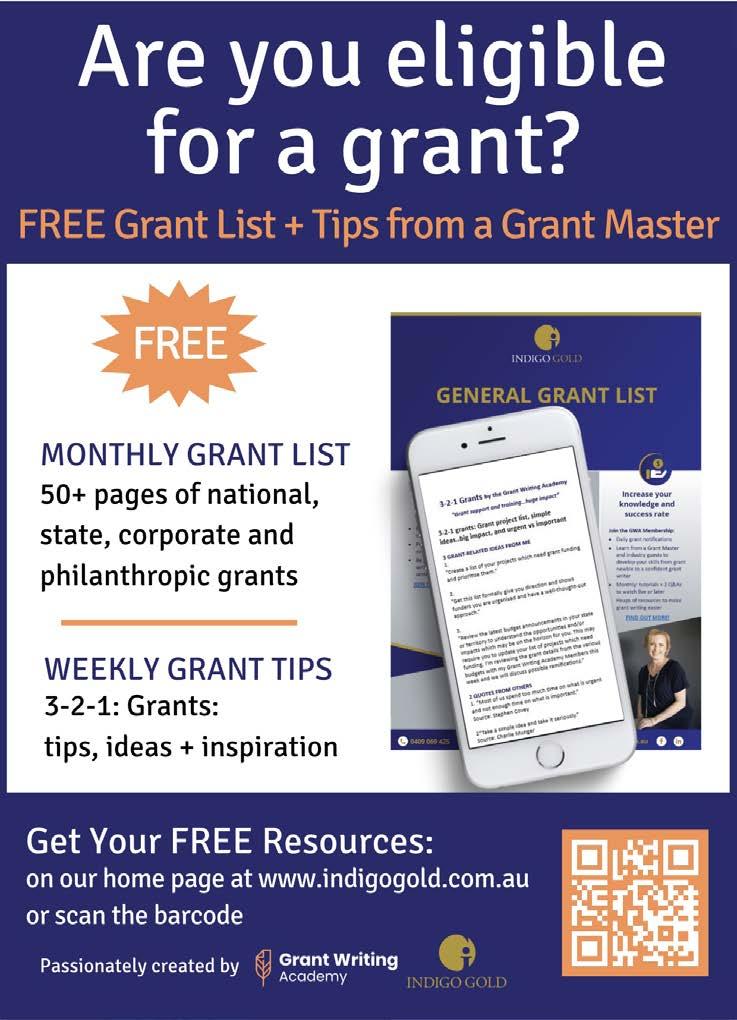

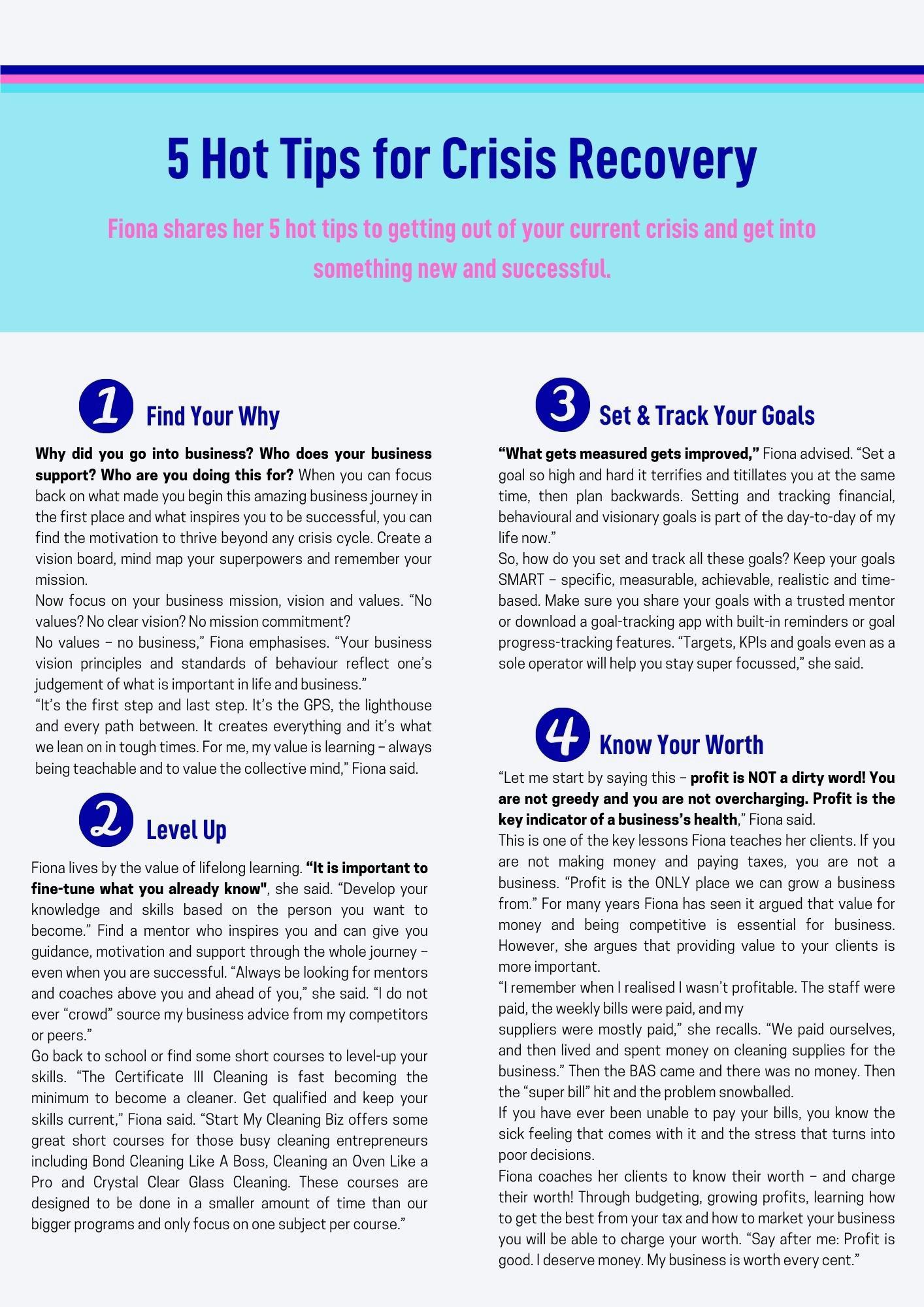
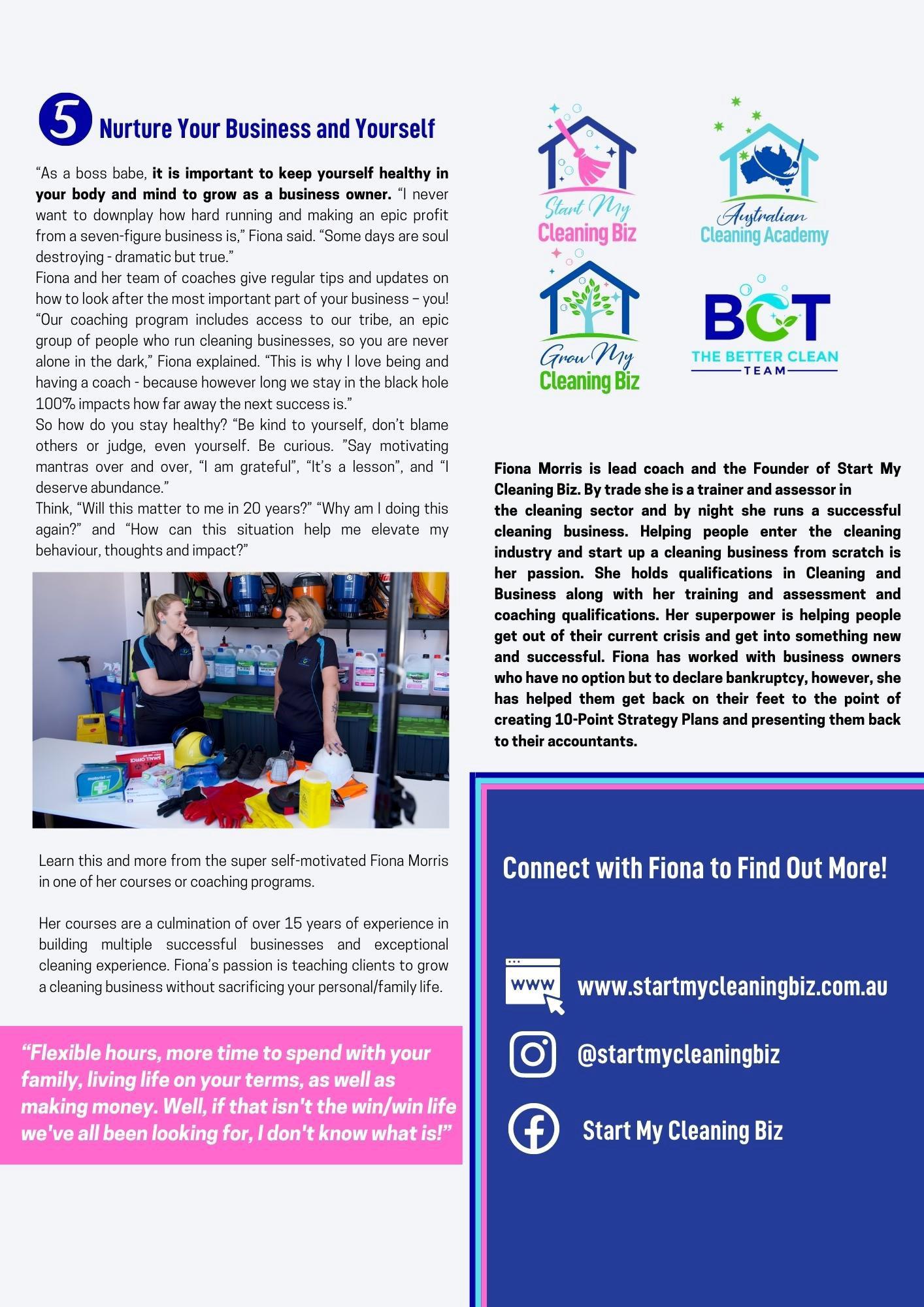
The Different Types of Publishing – & The Myths Surrounding Self-Publishing & Hybrid Publishers
Writing a book can seem daunting. Yet, once you’re done with the writing part, you’ll soon discover that getting a book published is often even trickier. If you’re currently looking at publishing a book – particularly a book for your regional business brand in 2023 – you’ll no doubt be wanting to know how to actually get it done. There are three main options when it comes to publishing any book: • Traditional publishing • Self-publishing
• Hybrid publishing (assisted self-publishing) Each of these options have their advantages and disadvantages. Let’s take a look at how they all stack up and compare. And then, we’ll take a look at a few myths surrounding hybrid publishers. Traditional publishing
A traditional publishing contract is often viewed as the ‘holy grail’ of publishing. And yes, it’s pretty exciting to pick up a publishing contract, it seems as if they’ve chosen you and are paying you to produce the book. However, it’s not that simple. Only a very select chosen few are lucky enough to score these deals. And unfortunately, it tends to be all about their profits, rather than yours. The Advantages:
• You often get paid an ‘advance’, while you continue to work on your manuscript (this is just a prepaid amount of money for your future, predicted book sales). • Their team does everything for you – cover design, editing, production etc. • There’s the potential for greater prestige through a larger traditional publishing house. • You can potentially access a larger, more established network of people and marketing avenues – which hopefully leads to you being in major bookstores and achieving more sales. The Disadvantages:
• Once you sign, THEY own the legal rights to your work – which means THEY own absolutely everything and take over control. How your cover looks, how your content is edited and how you’re promoted is entirely up to them and not you. • You generally only receive between 15 - 30% of your book sale profits. Not much! • You only tend to GET a contract with a traditional publisher IF you are well known, with a large established online audience and profile. This is difficult (if not impossible) if you’re just starting out. • Each publisher will only take on work that fits within their strict criteria, plus their own likes and dislikes. They are very picky and choose based on what
THEY think will sell and how much money it will make THEM. • You’re literally an owned, trained monkey – they say what you’ll do, and you have no choice but to do it. • It’s trickier to make changes or revisions later, unless
they say you can. But then, they’ll be the ones telling you how those revisions will look. • The publishing process can be incredibly lengthy. • You generally can’t apply direct, you need a literary agent to act on your behalf. Self-Publishing
In this option, you do everything yourself. Cover design, editing, production, distribution, legal requirements, EVERYTHING. Which clearly gives you full control over what you produce, but it can be a lot of work. In fact, many authors go down this route, but quickly give up, as the process can be so darn complicated to navigate alone for the first time. It’s certainly very doable if you have the time and the patience to spend hours Googling and YouTubing, and then experimenting via trial and error. But believe me, when I first did this, there was more error than success. And it wasted so much time and money. The Advantages:
• You have full control over your work at all times.
Thank goodness! • You keep ALL of your book sale profits. Yay! • If you want to make future changes or revisions, you just go and do it. • You can market your book any way you wish. • Basically – you get full creative and strategic freedom to do whatever you like. • You can get books published and out really quickly, if you know what you’re doing. The Disadvantages:
• You have to do ALL of the work yourself – or find individual people who can help you. Cover design, editing etc. all comes down to you – or the quality of people you can find. • You need to fund the entire process with your own money. • There’s a higher chance of poor-quality work and a low-quality finished product – that may not sell. • You probably won’t have the knowledge you need of the publishing process – such as getting your book distributed, putting the right files together for the different platforms (eBook and print are different – and often different file types are needed on different platforms etc.). • Therefore, there’s more chance of frustration, wasted time, extra expense and incorrect uploads. • Marketing is down to you – if you don’t know how, your book won’t sell. • You’re responsible for all the legal aspects. • You risk the title of ‘self-published’ author, which carries less credibility. Hybrid Publishing / Assisted SelfPublishing
This is where you combine the best aspects of traditional publishing and self-publishing. A professional publishing company helps you to produce your book and get it out onto the shelves – while you stay in control. However, you do need to invest some funds into this. Many people seem to view this as a negative. We have been running a Facebook ad lately, that has received a few crazy comments about us being scammers – simply because our publishing packages cost money. But would you really expect a team of professionals to do all of the work that goes into producing a quality book, for free? A graphic designer, painstakingly creating imagery magic on your unique front cover, can’t do that work for free. An editor, pouring over 70,000 words for hours upon hours, can’t work for free. It’s an investment, but these things can make or break the success of a book and can make or break your business image. The Advantages:
• Much easier to get a publishing contract – as you don’t need to be high profile or have a huge audience beforehand. • You keep FULL legal rights to your own work. • You keep 100% of the book sale profits. • You get access to an entire team of publishing professionals – who expertly handle all the different moving parts for you and walk you through the process, every step of the way. • You remain in full creative control – you have final say on the cover design, editing and marketing etc. We advise – you decide. • We can accept your manuscript immediately – and can start producing and publishing your book immediately.
• Our team moves swiftly to produce your book in a matter of weeks. In fact, from signing with us you could have a book published in just 6 – 8 weeks. Traditional publishing can take months, if not years. The Disadvantages:
• It’s NOT traditional publishing – so may not carry as much prestige. • You do need to pay a fee for a hybrid publisher to perform the work (but it often works out cheaper than paying individuals for things such as cover design and editing). The Common Myths of Self-Publishing & Hybrid Publishing
Hybrid publishers accept all manuscripts because they just want the money. This doesn’t hold true with most reputable hybrid publishers. Despite the fact that hybrid publishers charge a fee for publishing, that doesn’t mean we accept all manuscripts that come our way. We still have strict quality standards and will only attach our name to books that we believe will be successful, and that abide by our own literary and moral standards. Our team take our jobs very seriously and will always do our best to ensure we avoid plagiarism, offensive content and language or irresponsible topics. And yes, as a publisher, we are legally obligated to undertake the proper due diligence and are liable should we get this wrong. As an author, I should be paid for my book, not be paying for it.
Yes, a traditional publisher will often pay an ‘advance’ amount to you, when you sign your contract. In reality though, this is generally just an advance on your future book sale profits. This amount then comes OUT of your future profits. And when you’re only getting around 30% of each book sale (if you’re lucky!), it can take a fair while to get to the point where you’re paid anything further. Many contracts only offer 10% royalties. When you self-publish or hybrid publish, you get to keep ALL of your book sale profits. This can make a difference long term. Plus, you get to remain in control of your own work at all times, and often get published much faster. Self-publishing is not real publishing and doesn’t count – you’re not a real ‘author’ this way.
This is incorrect. Anyone who publishes a book in any way, instantly receives extra credibility to their name and business (if they have one) and can call themselves a published author. We all know just how difficult it is to write a decent book, so any published author is held in higher regard once they get it done. Generally, most readers don’t even question how it came to be. That said, you still need to ensure it’s professionally produced. And having a publisher’s details within the front cover, does give your book more authority. That’s where a hybrid publisher can help. It’s also not uncommon for authors, and particularly business owner authors, to begin by self- publishing their initial books – receive and grow their business from the attention from those self-published titles – and then be offered a big traditional publishing contract later on. Many highly successful, high-profile business owners have done this – and earnt millions of dollars in company revenue because they dared to start somewhere and give it a go, the easiest way they could at the time. Self-publishing achieves less results than traditional publishing.
This can be true, but it doesn’t have to be. Yes, a large traditional publishing house often has all the industry contacts, the marketing team and the massive audience that your book can then take advantage of. However many self-published authors achieve similar results on their own, when they market their book well. Self-published authors only come undone when they don’t put enough thought, effort or budget into marketing.
(Hint: Using us as a hybrid publisher also means you can tap into our other brands and in-house expertise, such as our marketing company.)
Publishing books to boost your business
Publishing a book is a great strategy for boosting your own profile, and that of your business. Becoming a published author gives you instant credibility and sets you up as an expert in your field. It can attract lots of opportunities, such as media interviews in newspapers or on radio, podcast opportunities, speaker opportunities and more. It can also attract more clients, who are willing to pay more for what you do. Many business owners are incredibly time poor, however. This can make writing and publishing a book a real challenge. And when you go to all that effort to write it, there’s a good chance you’ll want it published quickly, so you can start seeing the returns and benefits as fast as possible. This is where hybrid publishing can be a real advantage. Hybrid publishing can be fast. Really fast! Particularly with us at The Rural Publishing Company, we have the team and therefore the ability to produce quality books, and get them out into the world quickly. Being country folk, we don’t believe in mucking about. The combination of both speed and quality are important to us. There’s no need for you to try and learn the process or handle all the moving parts yourself, our team can do it for you and guide you through it. And if you haven’t started writing a book, but would like to and get published in 2023? That’s ok. We have a new Magic 8 Ball Business Book Mastermind starting early next year. It combines reflection, story writing and business strategy, so you can go from nothing to published in a mere 3 – 4 months. Not only do you come out of this mastermind with the title of ‘Published Author’, but you also come out if it with a customised business and marketing plan going forward. Keep reading to find the details – or email us at hello@theruralpublishingcompany.com.au if you’d like to join us.
About Sarah Walkerden & Toby Billing– The Rural Publishing Company
Sarah is a multi-award-winning copywriter and marketer with over 19 years’ experience. She holds a Bachelor of Technology and is recognised as a CPM (Certified Practising Marketer) with the Australian Marketing Institute. Sarah is also a best-selling author of multiple books. Toby is an experienced business founder, with multiple businesses and accolades under his belt. His current business, Billing Metals & Manufacturing, supplies specialty metals and element samples to schools, universities, and amateur scientists. They love nothing more than combining their skills to empower like-minded rural business owners and regional authors to succeed. More information: www.theruralmarketingco.com.au

Reflect –
On Where you’ve Come From Write –
Process the Emotions & Share Your Lessons Lead –
By Positioning Yourself as An Author
The Background When we were kids, my cousins had a magic 8 ball. You asked a question, shook it, it played a little tune, and then displayed your ‘fortune’ (in the form of a yes, no or maybe) on a tiny screen. We loved that darn thing. Even though, it was of course complete nonsense. But I’ve often wished there was a magic 8 ball for business. Something that would tell you what to do next and the right path forward. You know – what marketing tactic might work best at the current point in time. Or, where’s that next client going to be. That type of thing. It’s probably something you’ve at times wished for too. Business is often so unknown. Success so elusive. And yet, it got me thinking that maybe there IS a magic 8 ball. If you’ve ever gone down the path of self-discovery and mindset training, you’ll most likely be aware that most of the answers you need, tend to be within yourself. #frustratingbuttrue Our tendency is to always want answers from someone we perceive as knowing more than us. To be told what to do. And while yes, advice from mentors and peers is very important, much of the time we need to turn inwards to make important decisions. To listen to what our intuition or gut instincts are telling us. But when we’re so jolly busy all the time, we often struggle to really tune in to ourselves and our intuition. And sometimes, when we’re so busy and feeling stressed, the more we try to force ourselves to ask our intuition – the less likely, the answers are to come. They’ll be clouded by self-doubt. We often need a process and a significant reason to stop, smell the roses, and simply listen. (And unfortunately, that significant reason is usually when something really negative and drastic happens!) What if though, there was a process that allowed you to tune into your own intuition – to help you slow down a little, channel your energy, allow you to reflect on the past, find the lessons and uncover your true path forward? To actually help you to become your own ‘magic 8 ball’? But also – something that produced an entire new marketing tactic and business profile boosting strategy – all at the same time? That, my friends, is what a book could truly be. Writing a book for your business could in fact BE your very own magic 8 ball. And with the brand-new mastermind we’ve just created – it could be something that could completely change the trajectory of your entire business and life.
Enter – the Magic 8 Ball Business Book Mastermind. We spend 8 Weeks together. • We map out your magic 8 ball book topic idea. • We map out 8 perfect chapters. • We help you to find the 8 stories and the 8 lessons you need to share within those chapters. • You write those 8 perfect chapters with our support. • You make peace with those 8 experiences and lessons, no matter how tricky they were to deal with. • You reflect on those lessons and what you could be doing differently. • We help you uncover your next business steps to create a customised marketing & business plan going forward. AND – you come out of the experience with a finished manuscript AND a whole lot more clarity. PLUS, you can either self-publish your book yourself with our instructions OR hand your finished manuscript to us – and our team of magical book wizards will handle all the editing, design, distribution, and publishing for you – at a dramatically reduced price (like half price!). DEAL? DONE! This concept is like nothing else we’ve embarked on before – and like nothing else we’ve ever seen. It combines sound psychological and mindset principles, with our business coaching, marketing coaching and book coaching experience. And you end up with another revenue stream and marketing tactic in your business. It’s sheer genius. If you’re looking for a way to stand out in person and online, a book is certainly IT. And what could be better than not just having that book – but ending up with all that extra clarity at the end, with a business/marketing plan too. Mind blown, dudes. Mind. Blown. This is an 8 Week Group Mastermind Experience. Plus, we’ll add in an extra Planning week at the beginning – AND an extra clarity week at the end, where we help you come up with a customised marketing plan going forward. (So, in reality it’s actually 10 weeks, but 8 sounded better and you get 2 extra weeks free!). And, you can do it for just $888. Or, $111 per week over 8 weeks if you prefer. What would having your very own magic 8 ball mean to you? A customised plan, to boost your business profile and revenue, fast? Plus, that super special title of ‘published author’? Everything, we think.
KEY OUTCOMES: • Inner Quiet & Calm. • Mental & Business Clarity. • A Marketing Plan (Your Very Own Magic 8 Ball). • A Book Manuscript – Ready to Edit & Publish & Position You as an Industry Leader. WHAT YOU GET: • 1x Individual 1:1 Book Planning & Strategy Session With Us – To Get You Started. • 10 Weeks of Facebook Writing Support & Accountability (Ask Us Anything Access) • Potential Networking Opportunities (If we have enough people :p) • Our Signature Mastermind Writing Process & Formula – To Get you Writing Easily & Fast • 1x Individual 1:1 Business Clarity & Marketing Session – To Guide You In Future • The Chance to Market Your Business & Book on Our Socials (Business Page, Groups, YouTube),Email Database and our Digital Magazine for Rural Entrepreneurs. DATES: The Magic 8 Ball Business Book Mastermind will begin on 8th February 2023. The first lessons will be dropping at precisely 8:08am We’ll also be in touch to organise your 1:1 Book Planning Session either that first week, or the week or two beforehand. And we’ll organise a time for your final 1:1 Business Strategy Session after the mastermind concludes. You’ll have access to our Facebook group for coaching and networking from Monday 30th January 2023, through to Wednesday 12th April 2023.
Option 1 $888 – Book Planning & Strategy Session + Magic 8 Ball Mastermind + Clarity & Marketing Session 8-Week Payment Plan = $111 x 8I nves tment
Option 2
$4888 – Book Planning & Strategy Session + Magic 8 Ball Mastermind + Clarity & Marketing Session + Professional Publishing
Package (Discounted from our standard $8888 Business Book Package)
6 Month Payment Plan
$820 Per Month Over 6 Months
12 Month Payment Plan
$420 Per Month Over 12 Months
Note: The $4888 all-inclusive publishing price is only available upfront. After you complete the Mastermind, you can still choose to add on a publishing package – but it will be $5888 instead.)
Professional Publishing Package includes:
• ISBN’s & Barcodes • Full Editing • Cover Design • Internal Layout • Professional Proofreading • Production – both print and eBook formats. • Global Distribution – both print and eBook. • Print on Demand Setup. • Launch & Marketing Guide.
BONUS CONTENT
BONUS 1: How to Plan & Write Your Book Online Course (Value: $197) BONUS 2: DIY Self-Publishing Online Course (Value: $97)
Get both free courses instantly, when you sign up, so you can start thinking about and planning your book over the Christmas and New Year period, before the Mastermind officially starts.
Limited Spots Available
This Mastermind has been designed to be a small, intimate group experience, so we can provide the best support possible. We will be limiting it to 10 business owners only. First in, best dressed!
RESERVE YOUR PLACE TODAY Get your spot in the Magic 8 Ball Business Book Mastermind > Get your spot in the Magic 8 Ball Business Book Mastermind + Professional Publishing Package >
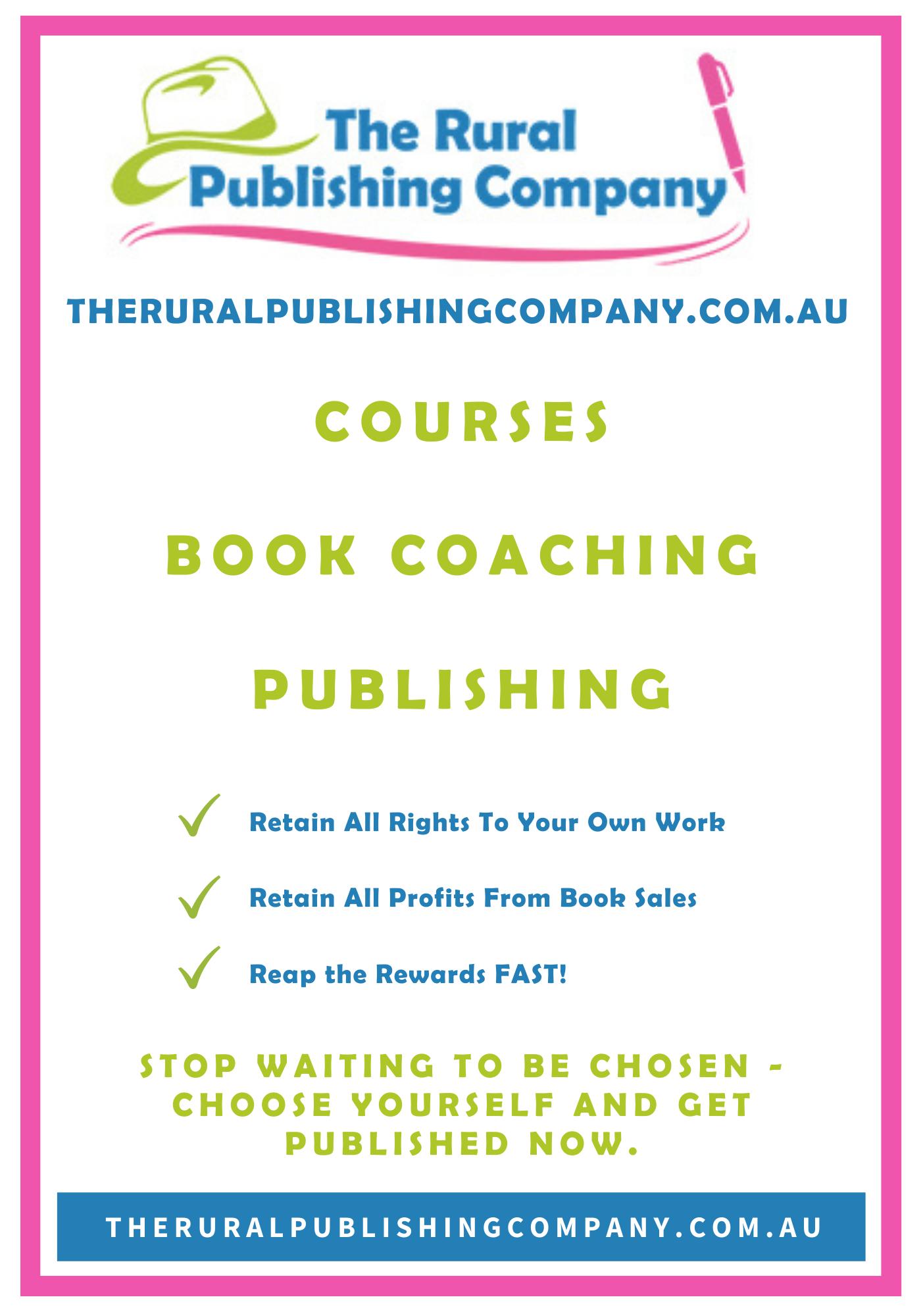
Catering for a Tall Niche in Clothing
By Penni Lamprey - Miss G & Me
When Penni Lamprey heard the news of the world’s largest tall women’s retailer closing in June 2020, she, and other women of height around the country panicked – where would they shop now? Standing at 184cm or 6’1 the Hobart mum-ofthree had experienced a life of ill-fitting clothes that were too short in every department, and while sewing clothes for herself had always been an option, Penni’s business mindset quickly saw an opportunity to beautifully dress not only herself but all taller Australian women. As it was for many women, the global turmoil of 2019/20/21 was an emotionally confronting time for her professionally. The trading restrictions during the first wave of COVID-19 meant she was unable to continue her career as a workplace health and wellbeing consultant, delivering in-house wellbeing and nutrition sessions. It was then Penni and her husband decided to take a risk, investing their savings to launch her brand Miss G & Me: Beautiful clothes for the tall. She knew the Australian market was utterly undersupplied, and what was available were garments that were cheap, flimsy and often smelled toxic, the zips would fail, seams would pull apart, and the hassle of returning garments to a faceless international was not worth the effort.” “Additionally, we, the taller women, only ever had access to off-season garments, without factoring in the difference in dressing styles of European, US and Australian women.” She intended to radically change the landscape of the Australian market; no experience in the fashion or design industry, during a global pandemic seemed moot points. Penni tells us relationship building and sharing your purpose is key – “fabric merchants and industry agents want this label to work as much as I do”. “The fashion and textile industries have taken a hammering from offshore manufacturing, cheap imports, loss of skilled machinists so they too want to support a label that enables the industry to rebuild while contributing to an individual’s wellbeing.” “I don’t need to know how to make a pattern, rather, I engage specialist pattern makers who know exactly what clothes that beautifully fit can do for an individual’s wellbeing and life – skilled professionals who could turn my drawings and
Penni Lamprey – Owner and founder Miss G & Me
Find Darwin Family Life: darwinfamilylife.com.au Follow us on Facebook: facebook.com/darwinfamilylife Follow us on Instagram: instagram.com/darwinfamilylife Get in touch: info@darwinfamilylife.com.au
bold ideas into beautiful clothing for the tall.” “I am the interface of all the specialists who make a garment come alive. My business operations and project management skills had been well developed during previous positions of hospitality management, self-employment, and public servant administration,”. Two years in, she now feels she can talk some of the industry language fluently, which contributes to gaining the respect of lifelong industry professionals who work with her. “I know who to call when I need expert input.” The Tasmanian said the immediate interest and support buoyed her. Penni received messages from tall women from around the country, expressing their desire for a sustainable, fashionable, Australian, tall specific women’s clothing label. “To honour this, commencing as ‘Australian Designed & Made’ was paramount”. From the onset, the label created and applied sustainable development goals to establish responsible consumption and production, gender equality, work and economic growth and sustainable cities targets. The label’s Victorian pattern makers and manufacturers are all Ethical Clothing Australia accredited which protects the wages and working conditions of staff and the customers appreciate this. “It’s just me, working for peanuts.” Lamprey jokes. “We don’t have the R&D budgets of the major retailers to turn plastic into fabric, however with design and clever pattern making, just by association, clothes that fit the taller silhouette will reduce the waste of a market that is nearly 2% of Australian women.” “As technology evolves, access to these fabrics will become greater for all labels.” It hasn’t all been smooth sailing, however. The Victorian lockdowns of 2021 did become problematic for the innovator as she couldn’t travel out of her home state to attend fitting sessions, and all industries in the supply chain were suffering from staff shortages. It wasn’t until June 2022 that operations began to settle and a ‘normal’ began to emerge. Social media reviews of satisfied taller women tell of the great fit of the garments and the quality of the materials used – some ‘with a little bit of magic sewn in’ claimed one well-dressed customer. Operating from her studio in North Hobart, the lifelong Tasmanian is itching to jump on a plane to visit the ‘Big Isle’ to attend the fashion shows and witness her products on the catwalks of Melbourne and Sydney fashion shows. But who will be the models? “I’ve always been asked what supermodels wear. However, they are rarely over 6 feet tall and are not sought after by the industry; society considers us to have unconventionally tall physiques - it does present dressing and lifestyle problems. For example, if you were to look at your blazer or shirt cuff, they will be sitting comfortably between your wrist and thumb joint”. “For me, and many other tall women, clothes cut into the abdomen and required a ‘jig or three’ to completely readjust each time we sit or stand. The mental energy used to dress each day can negatively add up”. She goes on to explain that the psychological safety, obtained from wearing clothes that fit your silhouette, cannot be underestimated. “You stand without fidgeting; you sit without discomfort and you stop making excuses for your appearance by comparison with others.” Not only is the label beautifully dressing people but will also contribute to the label’s values of ‘well’ and ‘being’. The very name Miss G & Me is about the now and the future. “It has been surreal living through a pandemic, closing a business and creating a new enterprise, and raising three destined-to-be-tall children”. The couple’s 14-year-old son is already 197cm (6’5) tall whilst his sister, the namesake’s Miss G, at 10-years-old is also destined to pass both her parents in height. So much so, a second label is already planned – “TallTweens, for when she reaches 175cm (5’10) - the height considered tall for women”. Without a doubt, the reflected interest and need for the Miss G & Me label occupies a niche in the Australian Fashion Industry. With sustainability, inclusion and contributing positively to society as its core values the predictions of success will continue well into the future.
Penni has three of her biggest business learnings to share
1. Planning sucks, but it’s imperative - your vision is imperative and often involves serving others; a small business owner can quickly become a benevolent enterprise if firm financial objectives are not set and actioned upon. 2. If you find yourself defending yourself, products or services, swing things around and promote - be it your prices, product range, or vision - people will always nit-pick, it’s your job to promote you, your products and their features once you’ve done the planning. 3. And lastly, you can do anything and everything, just not at the same time. You can learn everything, but you can’t apply it all at the same time. Outsource what will give you the best opportunity to reach tip no 1. About Penni Lamprey – Miss G & Me
Miss G & Me was founded in 2020 by Penni Lamprey, who gracefully stands at 6’1. She is on a mission to radically change the landscape of tall women’s fashion – never have Australian women had garments designed and created especially for them – they don’t want boring clothes that fit, they want beautiful clothes that fit. Without a doubt, the reflected interest and need for the Miss G & Me label occupies a niche in the Australian Fashion Industry. With sustainability, inclusion and contributing positively to society as its core values the predictions of success show Miss G & Me is well on its way to delivering.

Are you struggling to ‘RUN’ your quilting business?
We are here because we love to quilt, but we also need to earn a living!
Sharing business skills & information to assist you to have a thriving machine quilting business is our goal. Join our Gold Membership Group to grow and be supported in your journey to success.
With a strong focus on business skills, combined with computer and quilting skills, you are sure to discover courses that will both inspire you and grow your business.
Join with International Award winning quilter, entrepreneur, event creator & manager, retail business owner and longarm expert
Tracey Browning
who has mentored thousands of machine quilters to be successful in their own business and quilting endeavours.

Together ...
You will be supported and encouraged You will learn new skills and be challenged to grow! You can build your business to suit YOUR lifestyle and learn how to be more efficient with your time You WILL earn what you are truly worth! Tracey Browning www.machinequiltingacademy.com Agery RSD 1028, Kadina SA 5555 Ph: 0448 256 214 E: admin@machinequiltingacademy.com
Sign up to receive our newsletters & course launches!
Dicing up the pineapple industry with a more efficient way of doing business
By Anthony Dobson – Tropical Pines
John Cranny, Anthony Dobson and Stephen Pace
Pineapple consumption is extremely low in Australia, at only 1.3 pineapples per Australian per year. It’s a surprising statistic given our outdoorsy, BBQing, fruit-loving lifestyle. We generally embrace our fresh produce and our tropical fruits from the warmer northern parts of the country, especially in the warmer months. So, what’s happening with the humble pineapple? Pineapples are a stable, robust fruit that ships well due to the thick skin protecting it from the elements and transport. It is this very feature, however, that incites even the most intrepid home cook to put the pineapple in the too-hard basket. We do love our fruit, but the pineapple has developed a spiky perception that it is challenging to prepare and tricky to not waste too much flesh in the process. Super-food for super-health
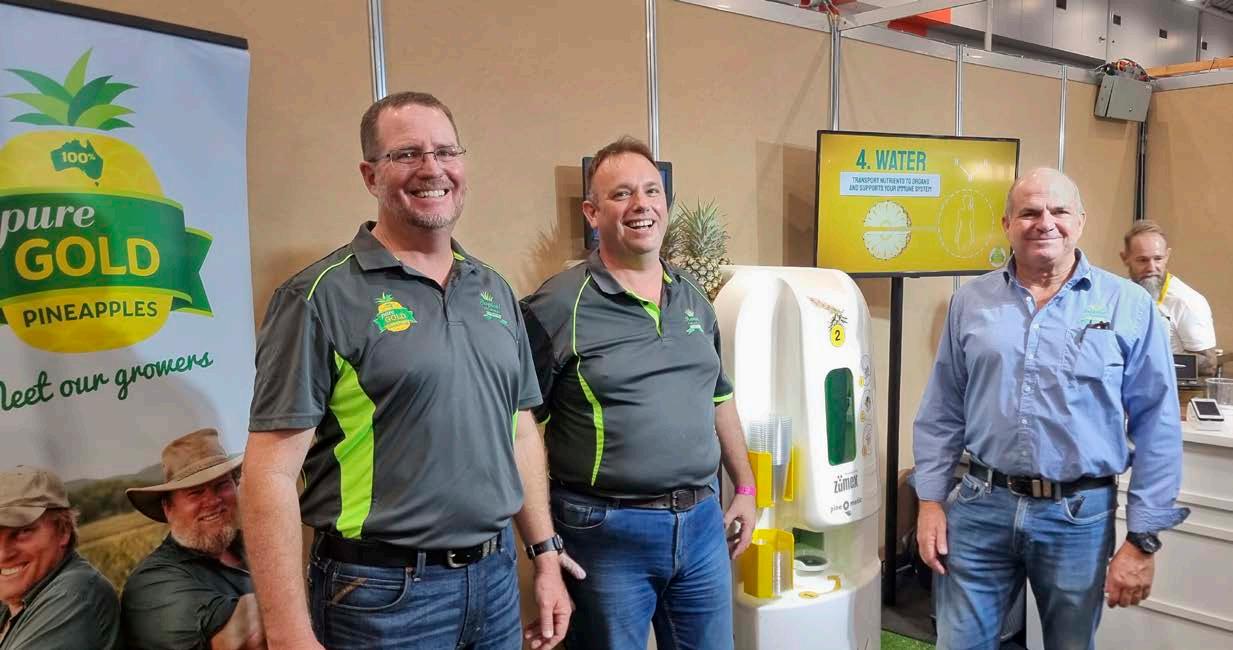
Not only are pineapples delicious – juicy, fresh, crunchy, and sweet – the health benefits see them routinely included in top super-food lists. The pineapple ranks high in the anti-inflammatory and digestive health stakes due to being rich in the enzyme bromelain, an ingredient of most digestive enzyme medications. The bromelain enzyme, which is unique to the pineapple, supports immunity and cell health with high levels of vitamin C, manganese, potassium, and fibre, and also contains a stack of micronutrients and enzymes beneficial to our health and wellbeing. In 2005, the Queensland Institute of Medical Research found two molecules within the pineapple, CCS and CCZ, that had cancer-fighting properties. Its low glycaemic load reduces the
impact on blood sugar levels and with very low fat and high fibre also supports glucose tolerance and weight management. We also know it is one of the least contaminated fruits from pesticides and herbicides given its protective skin. All of this makes it a desirable dietary addition to our daily lifestyle. Dicing up the industry

It’s clear that pineapple is great for our health. But while consumers love fresh fruit and healthy options, not all are up for the challenge of cutting through a pineapple’s tough exterior – nor do they want to purchase it pre-chopped in a plastic bag. To marry the desire for fresh pineapples without the fuss of chopping, pineOmatic is changing the face of the pineapple industry. PineOmatic takes away the mess and the stress while still allowing for choice and the freshest possible fruit. In a simple three-step process, a shopper can select the pineapple, drop it in the machine, and collect the shucked, cored, and sliced fresh fruit into a recyclable container for easy storage. In 20 seconds, all the hesitancy of pineapple preparation is eliminated. Contactless, quick, and easy to clean and with an exterior display with a tutorial video, the pineOmatic can increase consumption, meet the demand for fresh-cut produce, and reduce waste in one elegant solution. A consumption driver for consumers, the pineOmatic can enhance sales in supermarkets, independent grocers, produce stores, market stalls, and events such as the recent Good Food and Wine Festival in Brisbane. We would all benefit from eating more pineapple. An affordable, nutrient-dense food that keeps and travels well, pineapples are accessible, healthy, and delicious. In the interests of health, efficiency, and supporting our farmers, innovative solutions like the PineOmatic are the way forward to expanding the market.
Ken Fullerton
Author:
Anthony Dobson, General Manager Tropical Pines With over 30 years’ experience in the Fresh Produce Industry across businesses in the UK, Europe and Australia. Anthony brings a wealth of knowledge to the business, as he works to ensure that pineapples are on every consumer’s shopping list.

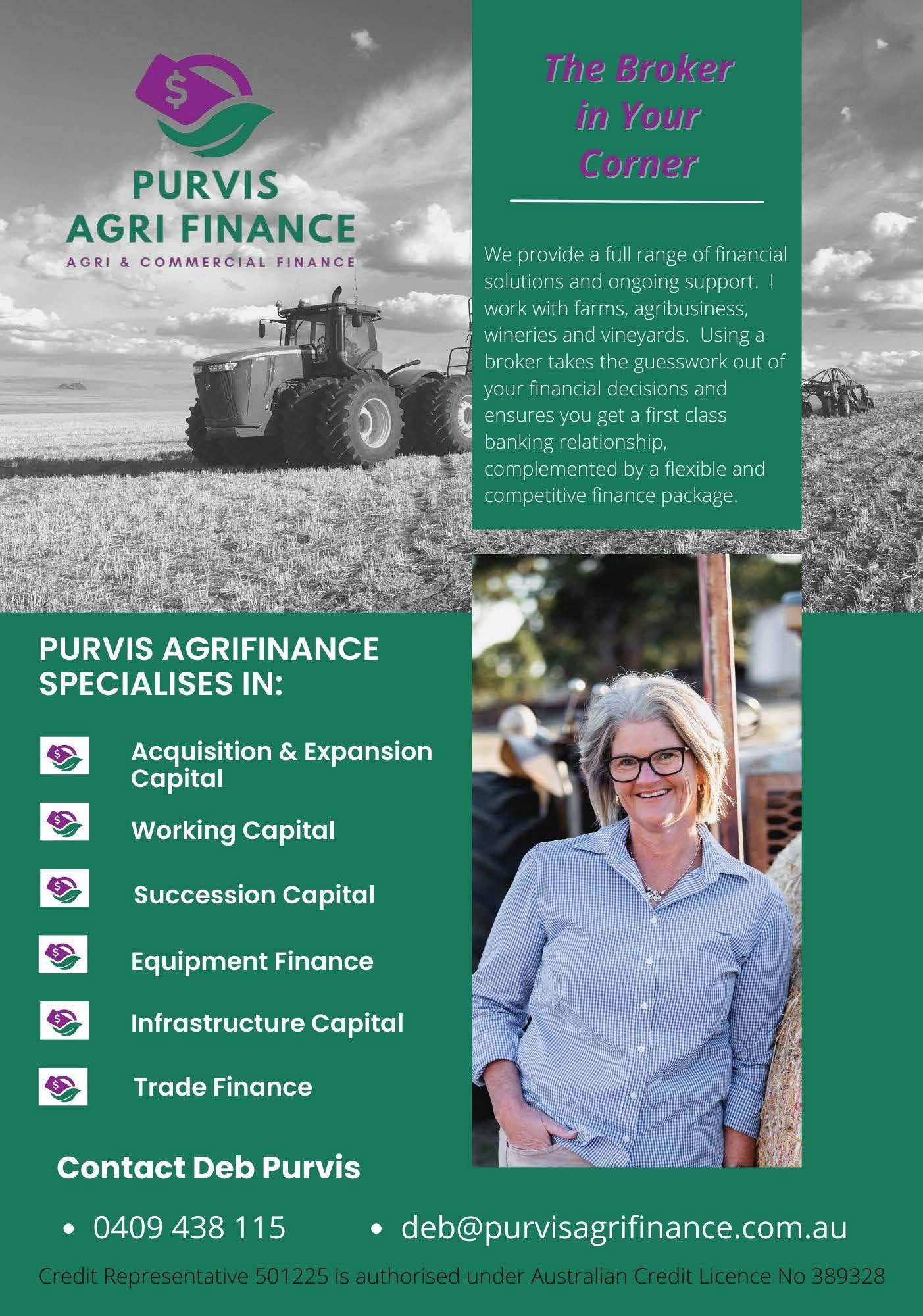
Health product entrepreneurs push for clinical trials at John Hunter Hospital

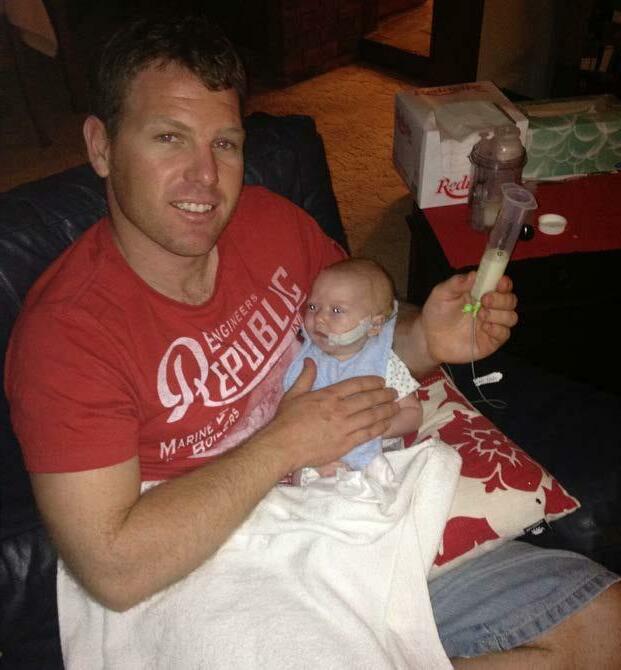
The founders of EzyAid, Adam Geosits of Singleton and Jess Hay of Gloucester, are currently seeking funding for a clinical trial of their product in the neonatal unit at John Hunter Hospital in Newcastle, NSW. The pair developed the new feeding tube adhesive after they experienced, first-hand, the difficulties of trying to attach a feeding tube to their baby. Adam and Jess’s son Matty was born with a rare condition called MED-13L Syndrome which meant he had to be tube fed for the first two years of his life. Jess says, “Matty was always pulling his tube out and the adhesive was just not sticking. We had to constantly change the tape – it was a difficult and traumatic process for everyone, but especially for Matty. Our design is simple to use and is a major improvement on the current feeding tube system that takes multiple pieces of sports tape and two people to install.” EzyAid, a slimline, transparent feeding tube adhesive that can be applied by one person, has been in development for eight years. After working through two patents, developing a working prototype, and undertaking a mini trial evaluation at John Hunter Hospital, the couple is now seeking crowdfunding support to get the product through to clinical trial. Jess says, “The next stage of the process is to get TGA approval, get the product into a clinical trial at John Hunter Hospital and then step through commercialisation and distribution. This is going to cost upwards of $200K, which is why we are asking for support.
“We are also open to the idea of partnering with a medical company, selling the product or accepting financial assistance from a venture capitalist or philanthropist to get EzyAid to market as soon as possible, and to start helping tube fed people, their families and health professionals” says Jess. In terms of the medical efficacy of the product, Clinical Nurse Consultant, Justine Parsons, says, “In my role as the Clinical Nurse Consultant for the Neonatal intensive Care Unit of John Hunter Children’s Hospital, I often review new products on the market. I have been working with Adam and Jess for some time now with regards to the EzyAid tube fixation device, offering clinical expertise and practical ideas. “It has been wonderful watching the development of the product and seeing the commitment and passion that they have for improving care for infants and children requiring long term tube placement. I wholeheartedly believe that the EzyAid has the potential to be a staple product in healthcare facilities, as well as for use in the community. I am happy to continue to support Jess and Adam as they progress this product through to market.” In addition to babies that need feeding tubes, EzyAid can also be used for the elderly, cleft palate patients, cancer patients, patients with cardiovascular disease, patients with feeding issues associated with stroke, anorexia, dementia, diabetics, cystic fibrosis sufferers and animals requiring surgery and sedation and many other reasons. To support Jess and Adam’s dream of getting EzyAid into clinical use, please go to: https://readyfundgo.com/project/ezyaid/







